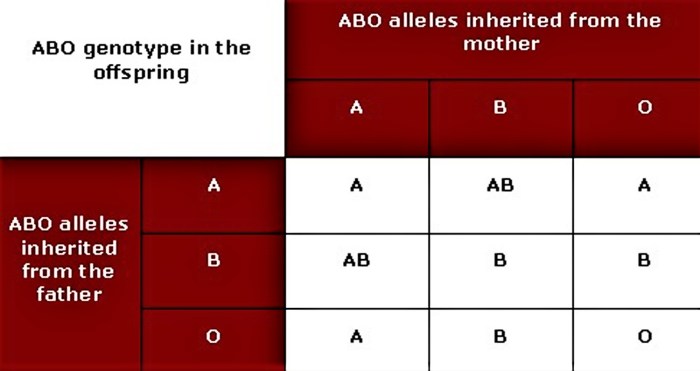Delving into the intricate world of blood type inheritance, this inheritance of blood types worksheet unveils the captivating science behind the diverse blood group classifications. As we embark on this journey, we will unravel the genetic mechanisms that govern blood type inheritance, delve into the significance of blood type compatibility in transfusions, and explore the fascinating medical implications associated with different blood types.
Through engaging explanations, interactive Punnett squares, and practical examples, this worksheet empowers you to grasp the fundamental principles of blood type inheritance. Prepare to immerse yourself in the captivating realm of genetics as we unravel the secrets of blood type determination and its profound impact on human health.
Blood Type Inheritance Patterns: Inheritance Of Blood Types Worksheet

Blood type inheritance is determined by the alleles inherited from both parents. There are three main blood type alleles: A, B, and O. Each person inherits two alleles, one from each parent. The combination of these alleles determines the person’s blood type.The
A and B alleles are dominant, while the O allele is recessive. This means that if a person inherits one A or B allele and one O allele, they will have type A or B blood, respectively. Only if a person inherits two O alleles will they have type O blood.

Blood Type Genotype and Phenotype
Genotype refers to the genetic makeup of an individual, while phenotype refers to the observable characteristics of an individual. In the case of blood type, the genotype is determined by the alleles inherited from both parents, while the phenotype is the actual blood type of the individual.The
following table shows the relationship between blood type genotype and phenotype:| Genotype | Phenotype ||—|—|| AA | A || AO | A || BB | B || BO | B || AB | AB || OO | O |
Blood Type Compatibility and Transfusions
Blood type compatibility is important for blood transfusions. When a person receives a blood transfusion, the donor’s blood must be compatible with the recipient’s blood. If the blood is not compatible, the recipient’s immune system will attack the donor’s red blood cells, causing a transfusion reaction.The
following table shows the compatible blood types for transfusions:| Recipient Blood Type | Compatible Donor Blood Types ||—|—|| A | A, O || B | B, O || AB | A, B, AB, O || O | O |
Blood Type Inheritance in Families
Blood type inheritance can be traced through families using a family tree. A family tree shows the relationships between family members and can be used to predict the blood type of offspring based on the blood types of their parents.For
example, if a parent has type A blood and the other parent has type B blood, their children will have either type A, type B, or type AB blood. They will not have type O blood because the O allele is recessive.
Blood Type and Medical Significance, Inheritance of blood types worksheet
Blood type has medical significance in several ways. For example, blood type can affect organ transplantation. Organs from a donor with a compatible blood type are more likely to be accepted by a recipient with the same blood type.Blood type is also used in forensic investigations.
Blood type can be used to identify individuals from blood samples found at crime scenes.
FAQ Section
What is the difference between blood type genotype and phenotype?
Genotype refers to the genetic makeup of an individual, while phenotype refers to the observable characteristics, such as blood type. In the context of blood types, the genotype determines the alleles inherited from both parents, while the phenotype represents the resulting blood type.
How can I determine my blood type genotype?
To determine your blood type genotype, you can use a Punnett square to analyze the possible allele combinations inherited from your parents. By understanding the inheritance patterns of blood type alleles, you can predict your own genotype and the potential blood types of your offspring.
Why is blood type compatibility important in transfusions?
Blood type compatibility is crucial in transfusions to prevent adverse reactions. Transfusing incompatible blood can lead to clumping of red blood cells, known as agglutination, which can block blood vessels and cause serious complications.


